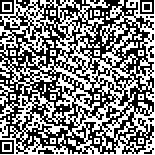| 摘要: |
| [摘要] 目的 探讨股前外侧皮瓣解剖修复法重建舌癌术后缺损对于患者术后语音功能恢复的影响。方法 选取2018-01~2020-01该院收治的舌癌患者58例,采用随机数字表法将其分为解剖修复组和非解剖修复组,每组29例。分别采用股前外侧皮瓣解剖修复法与非解剖修复法对两组舌癌术后缺损进行修复。比较两组术后第1个月、第3个月及第6个月舌肌运动评分,以及舌尖音、舌根音和边音的语音清晰度(PI)。结果 术后两组舌肌运动评分均呈下降趋势。在术后第1个月、第3个月和第6个月,解剖修复组的舌肌运动评分均显著高于非解剖修复组,差异有统计学意义(P<0.05)。两组术后不同时点舌尖音、边音及舌根音PI值均呈下降趋势。解剖修复组舌尖音、舌根音PI值在术后各时点均显著高于非解剖修复组(P<0.05);但对于边音,解剖修复组PI值仅在术后第1个月显著高于非解剖修复组(P<0.05)。结论 与非解剖修复法比较,应用解剖修复法修复舌癌术后缺损有助于重建舌体外形,恢复舌的运动,改善舌癌患者术后的语音功能。 |
| 关键词: 股前外侧皮瓣 解剖修复法 舌缺损 语音功能 舌癌 |
| DOI:10.3969/j.issn.1674-3806.2020.08.10 |
| 分类号:R 782.05 |
| 基金项目:中华口腔医学会西部行口腔医学临床科研基金项目(编号:CSA-W2017-06) |
|
| Study on the effect of tongue cancer resection and anterolateral thigh flap anatomical repair in one-stage operation on patients′ speech function recovery |
|
LI Shuai, WANG Xiao-meng, WEI Yi, et al.
|
|
Department of Oral and Maxillofacial Surgery, Affiliated Stomatological Hospital of Guangxi Medical University, Guangxi Key Laboratory of Oral and Maxillofacial Rehabilitation and Reconstruction, Guangxi Clinical Research Center for Craniofacial Deformity, Guangxi Key Laboratory of Oral and Maxillofacial Surgery Disease Treatment, Nanning 530021, China
|
| Abstract: |
| [Abstract] Objective To investigate the effect of anterolateral thigh flap anatomical repair on speech function recovery after reconstruction of tongue carcinoma defects. Methods Fifty-eight patients with tongue cancer admitted to our hospital from January 2018 to January 2020 were selected, and were randomly divided into the anatomical repair group and the non-anatomical repair group by random number table method, with 29 cases in each group. The anterolateral thigh flap anatomical repair and non-anatomical repair were used to repair the postoperative defects of tongue cancer for the two groups respectively. The tongue muscle motor score, the phonetic intelligibility(PI) of apical sound, lateral sound and velar sound were compared between the two groups 1 month, 3 months and 6 months after operation. Results The tongue muscle motor scores showed a downward trend in both groups after operation. The tongue muscle motor scores of the anatomical repair group were significantly higher than those of the non-anatomical repair group 1 month, 3 months and 6 months after operation, and the differences were statistically significant(P<0.05). The PI values of apical sound, lateral sound and velar sound showed a downward trend in both groups at different time points after operation. The PI values of apical sound and velar sound in the anatomical repair group were significantly higher than those in the non-anatomical repair group at different time points after operation(P<0.05). However, for the lateral sound, the PI value of the anatomical repair group was significantly higher than that of the the non-anatomical repair group only at the first month after operation(P<0.05). Conclusion Compared with non-anatomical repair, anatomical repair used for repairing postoperative defects of tongue cancer is helpful to reconstruct the shape of the tongue, restore the movement of the tongue and improve the postoperative speech function of the patients with tongue cancer. |
| Key words: Anterolateral thigh flap Anatomical repair Tongue defects Speech function Tongue cancer |

